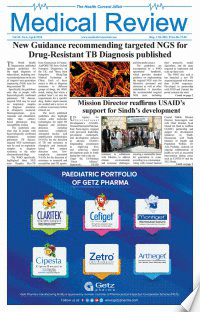Safe Blood Transfusion Program, Islamabad in collaboration with Sindh Blood Transfusion Authority (SBTA) and Punjab Blood Transfusion Authority (PBTA) organized formal ‘Focus Group Discussions’ aimed to share experience and recommendations for the design of public awareness campaigns especially their views of donor policies, communication and donor mobilization strategies and their perception of existing and required knowledge, attitudes and values was held in Karachi, Lahore Islamabad respectively. More than 70 participants from all parts of the country participated in the discussion. The group of stakeholders comprised BDOs, Public Health Programmes (HIV AIDS Control Programme, Malaria Control Programme, EPI, TB Control Programme, Dengue Prevention and Control Programme), Media Departments of Universities, as well as Media Coordinators and Social Marketing Professionals.
The sessions were framed by presentations provided by Paul Kohorst, TL SBT GFA, and the International STE, Peter Heimer. Paul Kohorst highlighted the importance of public awareness related to VNRBD and stressed the need of adopting VNRBD as recommended in the NBP & NSF, New Safe Blood Transfusion Act 2015 and National Blood Donor Policy, while Peter Heimer presented the international panorama of VNRBD and provided essential details of the concept of voluntarism.
Focus Group Discussions, in which the different stakeholder groups were brought together, were a key element of the methodology adopted by the expert. In addition, the mission conducted bilateral meetings with directors of health programmes, paid visits to a number of Blood Banks and Thalassaemia Centers, and also visited the Punjab Thalassaemia Prevention Programme in Lahore. One of the key findings was the ‘island approach’ followed by most stakeholders, under which services are provided without the guidance of a central programme and without government directions. Participants shared their work through Powerpoint presentations and video clips. Group discussions were conducted on Policy and Strategy; Knowledge, Values and Attitudes; Messages and Channels.
During the discussions, the participants jointly analysed expected benefits of different designs/strategies of VNRBD Public Awareness Campaigns and presented their suggestions for the promotion of a voluntary blood donation culture in the society and stressed the need of clarifying misconceptions in the general public. Many people feel that blood donated might be sold and misused and some people believe that they might contract diseases if they donate blood. It was also highlighted that blood safety is missing in academic curricula for colleges and universities, that there is a diversity of perceptions, myth and misconceptions across communities, and that institutional channels to engage media groups to inform population at large are missing.
It was concluded that work is done by a variety of stakeholders based on their individual capacity, while coordination at local and regional level is poor. Stakeholders agree that coordination is required for any ‘breakthrough’ and paradigm shift, as so far there is no culture of VNRBD in Pakistan, while donations are generous in times of national calamities. It was claimed that a uniform donor policy has to be followed at national and provincial levels to guide the motivation and management of donors, the arrangement of donor facilities, the establishment of donor management units, the use of media in campaigns and the conduction of university based donation drives. Uniformity would be required also for actions under the upcoming world blood donor day.


